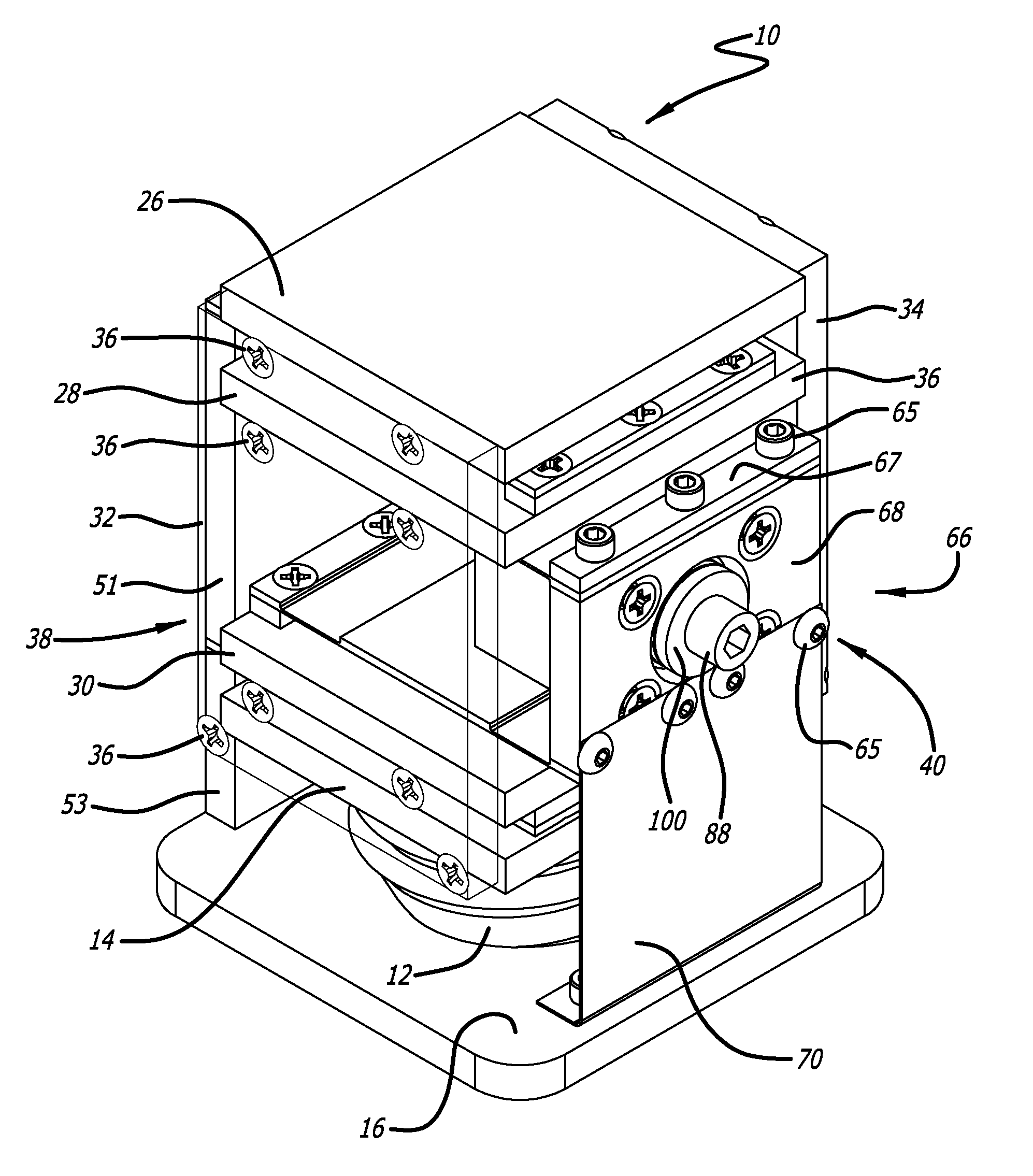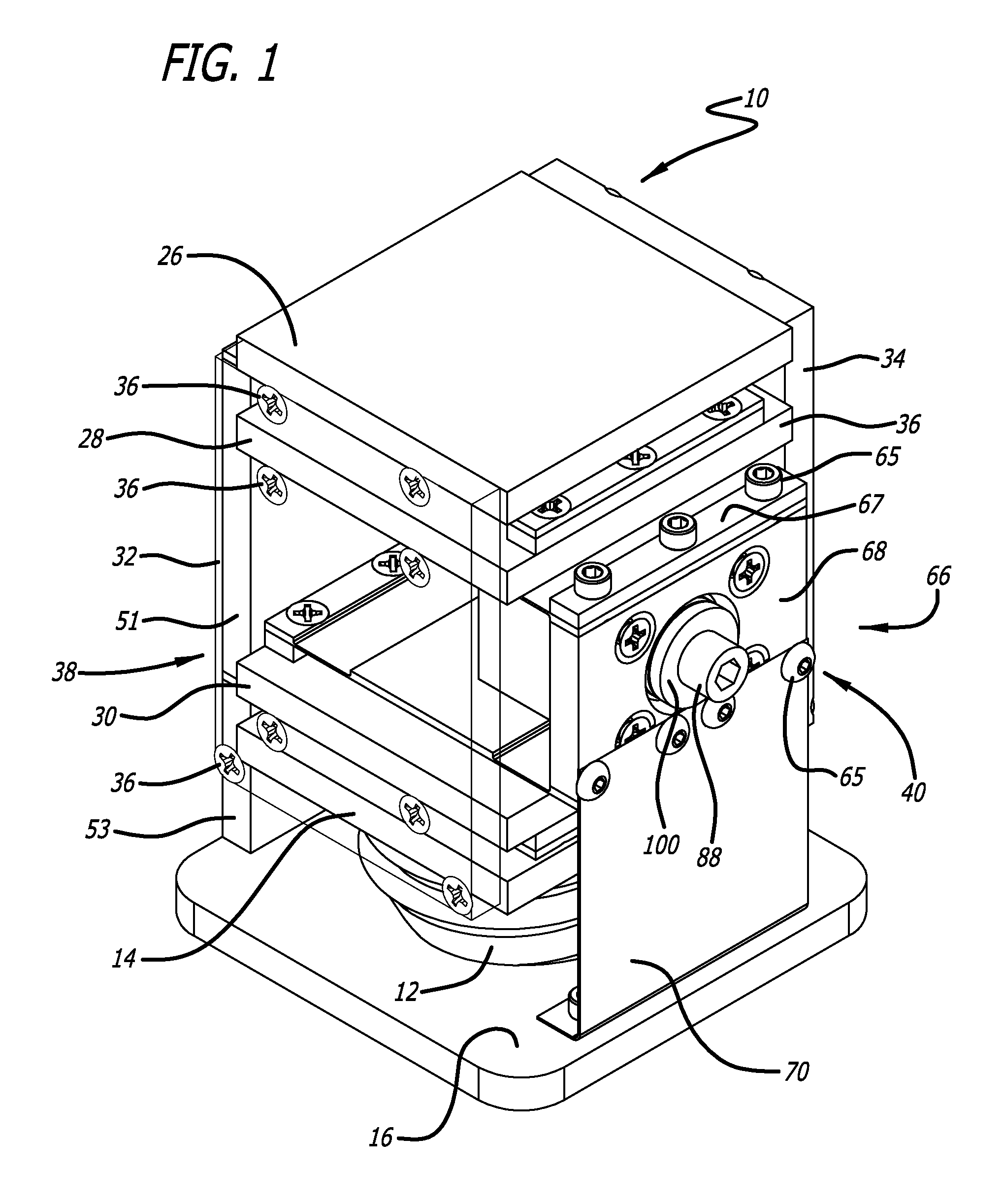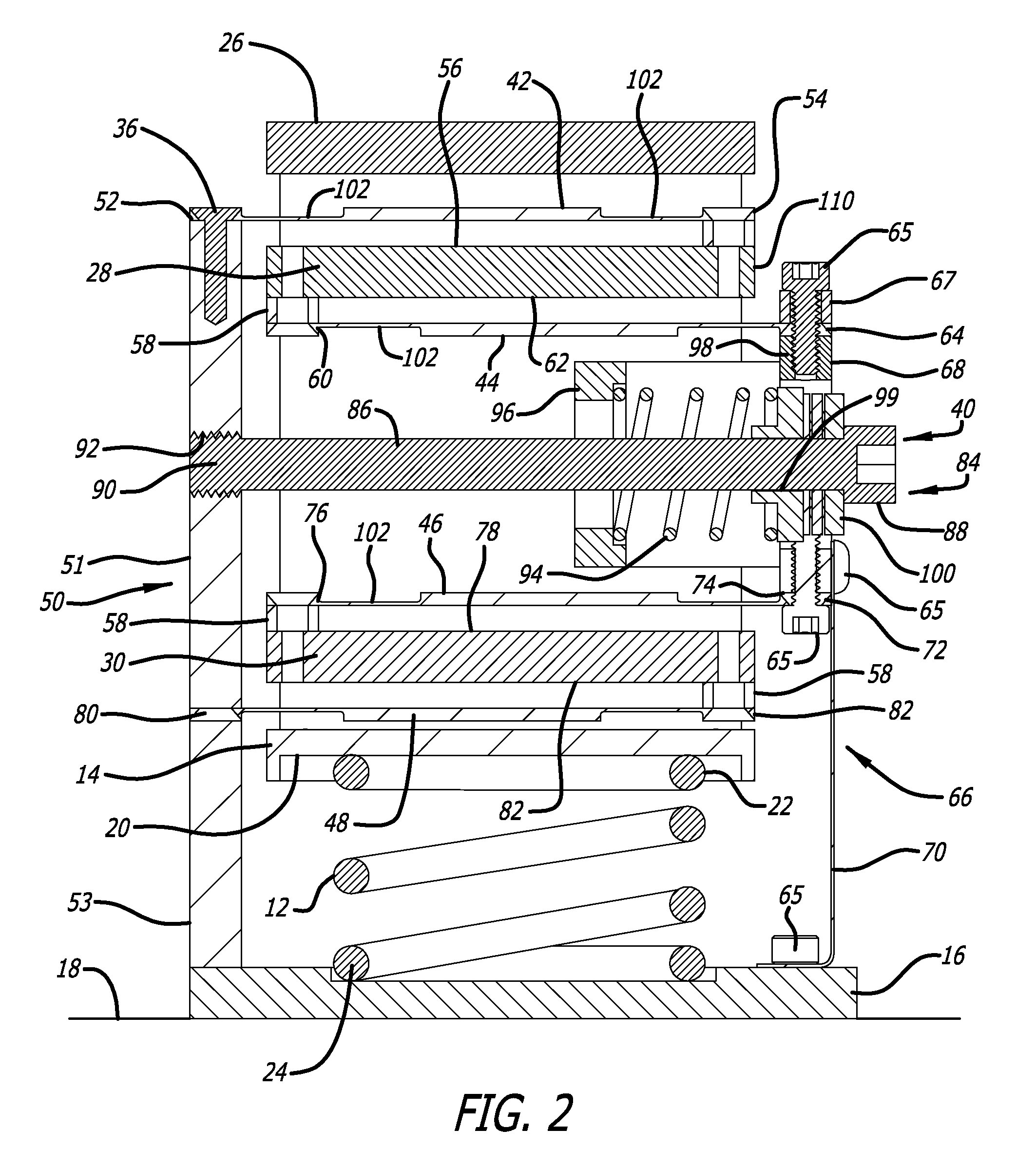Compact vertical-motion isolator
a vertical-motion isolator and compact technology, applied in the direction of mechanical apparatus, low internal friction springs, springs/dampers functional characteristics, etc., can solve the problems of increasing the damping inherent in the structure, reducing the vertical or horizontal stiffness, etc., to remove the positive stiffness, and reduce the overall width of the vertical-motion isolator
- Summary
- Abstract
- Description
- Claims
- Application Information
AI Technical Summary
Benefits of technology
Problems solved by technology
Method used
Image
Examples
Embodiment Construction
[0031]FIGS. 1-5 show one embodiment of a compact vertical-motion isolator 10 made in accordance with the present invention. The embodiment of the vertical-motion isolator 10 of FIGS. 1-5 is designed to support a payload (not shown) relative to a foundation to reduce the transmission of axial or vertical vibrations (motion) between the payload and foundation.
[0032]The compact vertical-motion isolator 10 of the present invention includes a support member in the form of a main support spring 12 that is operatively connected between an upper spring support 14 and a base platform 16 that sits on the foundation 18. This base platform 16 may include leveling screws (not shown) which could be used for leveling the base platform 16 relative to the foundation 18. The upper spring support 14 includes a recess 20 for receiving one end 22 of the support spring 12. The other end 24 of the support spring 12 remains in contact with the base platform 16.
[0033]A top mounting plate 26 is coupled to th...
PUM
 Login to View More
Login to View More Abstract
Description
Claims
Application Information
 Login to View More
Login to View More - R&D
- Intellectual Property
- Life Sciences
- Materials
- Tech Scout
- Unparalleled Data Quality
- Higher Quality Content
- 60% Fewer Hallucinations
Browse by: Latest US Patents, China's latest patents, Technical Efficacy Thesaurus, Application Domain, Technology Topic, Popular Technical Reports.
© 2025 PatSnap. All rights reserved.Legal|Privacy policy|Modern Slavery Act Transparency Statement|Sitemap|About US| Contact US: help@patsnap.com



